Traverse the intriguing landscape of bisexuality in the Bible, where stories like David and Jonathan's invite a deeper exploration of love's expressions.
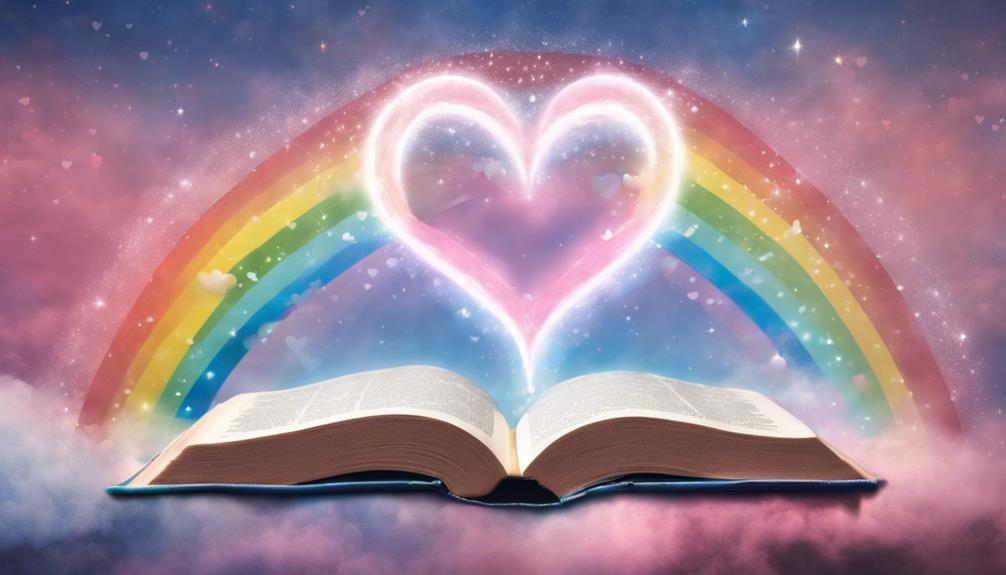
Bisexuality in the Bible
Imagine you're exploring the rich tapestry of human relationships depicted in the Bible and stumble upon the tale of David and Jonathan, a story some interpret as a deep, complex bond transcending friendship.
This narrative opens a window into the nuanced discussions surrounding bisexuality within biblical texts. As you peel back layers of historical context, interpretations, and theological perspectives, you'll find that the conversation is far from black and white.
It beckons you to explore further, challenging preconceived notions and inviting a deeper understanding of bisexuality's place in both ancient texts and contemporary reflections.
Key Takeaways
- Ancient texts, including the Bible, show evidence of intimate relationships that challenge modern heteronormative interpretations.
- Cultural and translation biases have historically influenced the perception of bisexuality in biblical narratives.
- Scholarly debates highlight the importance of revisiting biblical stories with an open mind towards non-traditional interpretations of love.
- The evolving understanding of sexuality in religious contexts encourages more inclusive interpretations of biblical stories today.
Historical Context of Bisexuality
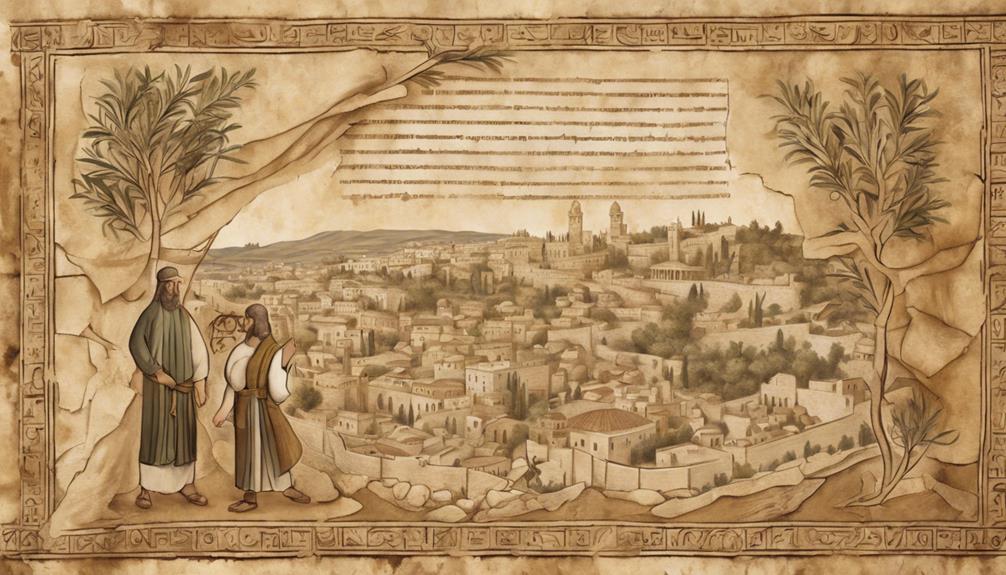
Understanding the historical context of bisexuality requires us to delve into the complex tapestry of human sexuality, tracing its manifestations and interpretations through various cultures and epochs. You'll find that cultural attitudes and gender norms have significantly influenced how bisexuality has been perceived and expressed throughout history.
In many ancient civilizations, bisexuality wasn't only acknowledged but often celebrated, indicating a fluid understanding of sexuality that contrasts sharply with later, more rigid interpretations. These societies didn't strictly adhere to the binary gender norms that later became predominant, allowing for a more inclusive view of human desire and relationships.
However, as time progressed, shifts in cultural attitudes began to favor a more dichotomous view of sexuality, often influenced by religious and socio-political changes. This shift led to the marginalization of bisexuality, with gender norms becoming a tool for enforcing heteronormativity and dismissing any deviation as aberrant.
Your exploration of bisexuality's historical context reveals a fluctuating landscape, where cultural attitudes and gender norms have both constrained and facilitated the understanding and expression of bisexuality. This analysis underscores the importance of recognizing the fluidity of human sexuality and the arbitrary nature of the constraints imposed upon it.
Interpretations of Biblical Texts
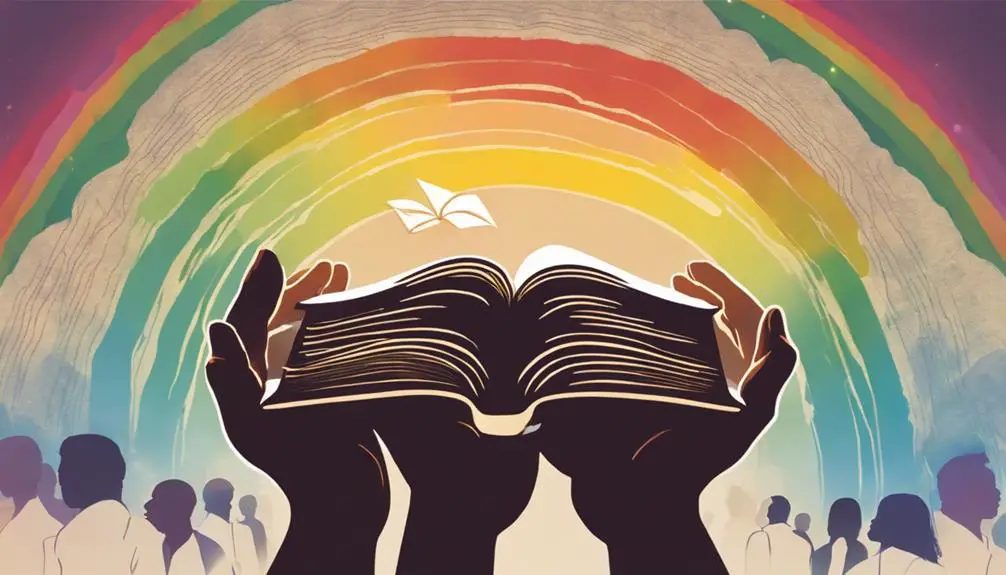
Having explored how cultural attitudes and gender norms have historically shaped perceptions of bisexuality, we now turn our attention to the interpretations of biblical texts and their implications on this subject. You'll find that translation challenges and cultural biases play significant roles in how these texts are understood and taught.
Aspect |
Impact on Interpretation |
|---|---|
Translation Challenges |
Variances in language and historical context can lead to different interpretations, especially concerning sexuality. |
Cultural Biases |
Pre-existing biases regarding gender and sexuality can color the interpretation of texts, often overshadowing original meanings. |
Scholarly Debate |
Diverse scholarly perspectives contribute to ongoing debates about the inclusivity of biblical texts. |
Reader's Perspective |
Individual beliefs and experiences influence how one interprets and relates to biblical narratives. |
As you delve into the complexities of biblical interpretations, it's crucial to acknowledge these factors. They remind us that the Bible, like any historical text, isn't read in a vacuum. Instead, its understanding is shaped by a myriad of translation challenges and cultural biases. This awareness encourages a more inclusive and nuanced approach to interpreting biblical texts, especially concerning bisexuality.
Notable Figures and Stories
Why don't we explore the stories and figures within the Bible that have sparked significant debate regarding bisexuality, shedding light on the nuanced interpretations that arise from their narratives? The discussions often revolve around relationships that, while not explicitly sexual, are deeply intimate and have led some to question the traditional boundaries of platonic love.
- David and Jonathan: The bond between David and Jonathan is frequently cited in debates about bisexuality in biblical texts. Their relationship is described with a depth of affection and commitment that surpasses that of David's relationships with women, including his marriages. The phrase 'the soul of Jonathan was knit to the soul of David, and Jonathan loved him as his own soul' (1 Samuel 18:1) has been interpreted by some as indicative of a bond transcending friendship.
- Ruth and Naomi: The story of Ruth and Naomi is another narrative that challenges traditional interpretations of relationships. Ruth's declaration, 'Where you go, I'll go, and where you stay, I'll stay. Your people will be my people and your God my God' (Ruth 1:16), has been read as a pledge of loyalty that mirrors the commitments found in romantic relationships.
- Modern Interpretations: Many scholars and theologians now approach these stories with a broader understanding of human relationships, recognizing the potential for bisexuality and other forms of sexual identity within the biblical context.
Theological Perspectives on Bisexuality
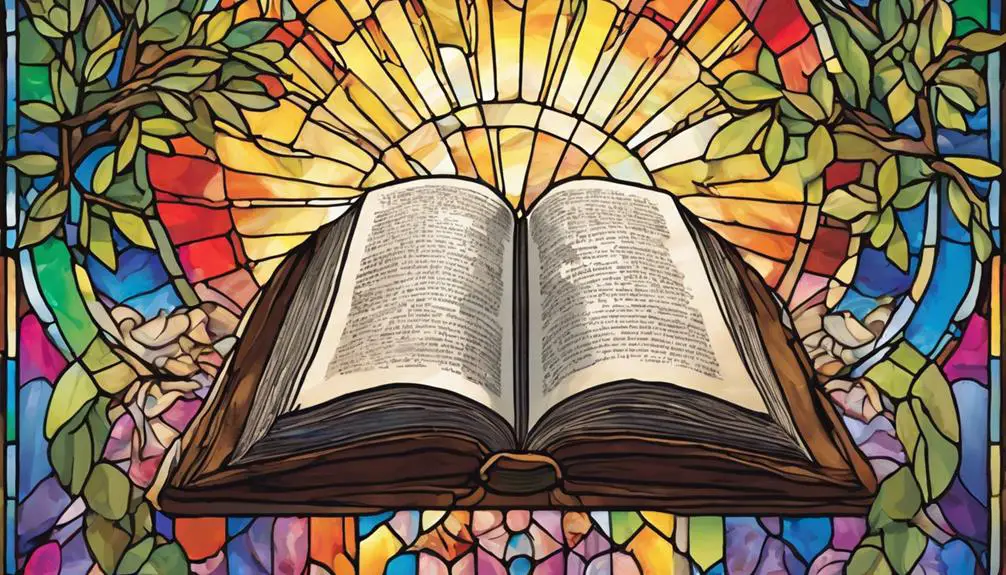
Exploring the stories of David and Jonathan, Ruth and Naomi, opens the door to a broader discussion on how various theological perspectives interpret bisexuality within biblical contexts. It's crucial to understand that church teachings have evolved significantly over time, influenced by shifting cultural impacts and deeper biblical scholarship. You'll find that interpretations of bisexuality in the Bible are as diverse as the communities reading the texts.
Some theological perspectives view these relationships through a lens of platonic love, emphasizing the depth of friendship and loyalty. Others, however, suggest a more inclusive reading, acknowledging the possibility of romantic love that transcends modern heteronormative frameworks. This inclusive interpretation challenges traditional church teachings, advocating for a broader understanding of love and attraction that encompasses bisexuality.
The cultural impacts on theological perspectives can't be overstated. As societies become more accepting of LGBTQ+ identities, there's a push within some religious communities to revisit and reinterpret biblical texts with an open mind. This evolving conversation reflects a dynamic interplay between steadfast faith and the recognition of diverse human experiences. It underscores the importance of engaging with these ancient texts in ways that honor both historical context and contemporary understandings of sexuality.
Modern Relevance and Reflections

In today's rapidly evolving societal landscape, the discussion of bisexuality in biblical texts gains unprecedented relevance, urging us to reflect on how these ancient narratives intersect with contemporary understandings of sexuality. This intersection challenges us to reconsider:
- The role of cultural acceptance in the interpretation of these texts.
- How personal identity is both shaped and reflected by religious teachings.
- The potential for these scriptures to either marginalize or empower individuals across the sexuality spectrum.
Analyzing bisexuality through a biblical lens in the modern era encourages a scholarly exploration that transcends traditional binary views of sexuality. It invites an inclusive dialogue that respects personal identity while critically examining the cultural and historical contexts of biblical passages. This approach not only fosters a broader understanding of the texts but also promotes a more accepting and nuanced view of bisexuality.
As society progresses, the imperative to reinterpret these ancient texts in a way that reflects contemporary values of inclusivity and respect for personal identity becomes increasingly clear. By engaging in this reflective process, you contribute to a larger conversation about the intersection of faith, sexuality, and cultural acceptance, paving the way for a more inclusive religious experience.
Frequently Asked Questions
How Do Different Christian Denominations Currently Address and Acknowledge Bisexuality Within Their Communities?
Different Christian denominations address and acknowledge bisexuality within their communities through varied denominational policies and levels of community support.
You'll find that some are more inclusive, actively working to understand and support bisexual members, while others may have policies that are less accepting.
It's important to look at how these policies are implemented and the real-world support provided to individuals, as this greatly affects the inclusivity and acceptance within each denomination.
What Are the Psychological Impacts on Bisexual Individuals Due to the Traditional Interpretations of the Bible Regarding Sexuality?
When exploring the psychological impacts on individuals, it's crucial to understand how traditional interpretations of texts can significantly affect mental health effects and identity validation. Your sense of self may suffer when faced with rigid, non-affirming views, leading to confusion and distress.
This isn't just about religious texts but any influential narrative that doesn't recognize or validate bisexuality, potentially exacerbating feelings of isolation and impacting overall mental well-being.
Are There Any Documented Shifts in the Perception of Bisexuality in the Bible Over Different Historical Periods, Outside of Theological or Scholarly Interpretations?
Absolutely, there have been shifts in how bisexuality is perceived over time, influenced by ancient translations and cultural adaptations. You'll find that earlier interpretations mightn't directly align with today's understanding.
This evolution reflects broader societal changes. Researchers have traced these shifts, noting how interpretations are shaped by the cultural context of the time.
It's fascinating to see how historical perspectives have molded current views, making your exploration both scholarly and inclusive.
How Do Bisexual Individuals Reconcile Their Faith With Their Sexuality, Particularly in More Conservative Religious Settings?
You're navigating the complex intersection of sexual orientation and religious belief, especially in conservative settings. To reconcile your faith with your sexuality, you might personalize your faith, focusing on a relationship with the divine that's inclusive of your identity.
Bisexual visibility plays a crucial role, as it challenges traditional narratives and fosters a more accepting environment. Engaging with like-minded communities and interpreting religious texts in a way that affirms your identity can also be empowering strategies.
What Role Do Non-Biblical Religious Texts and Teachings Play in Shaping the Understanding of Bisexuality in Christian Contexts?
In exploring your identity, you'll find that non-biblical religious texts and teachings significantly influence Christian perspectives on bisexuality. Through interfaith dialogue, you're exposed to diverse views that can broaden understanding.
Cultural influences from these texts often challenge or complement biblical interpretations, offering you a more inclusive framework. This analytical approach helps bridge gaps, allowing for a scholarly exploration of faith and sexuality that's respectful and enlightening for all involved.
Conclusion
In exploring bisexuality through the lens of the Bible, you've traversed historical contexts, interpretations, and notable narratives. This journey underscores the complexity and nuance of human sexuality within a theological framework.
Scholars and theologians offer diverse perspectives, reflecting broader societal shifts towards inclusivity. Your understanding of bisexuality in biblical texts is enriched, prompting a reflective examination of modern relevance.
This analysis not only challenges traditional interpretations but also fosters a more inclusive and empathetic understanding of human diversity.

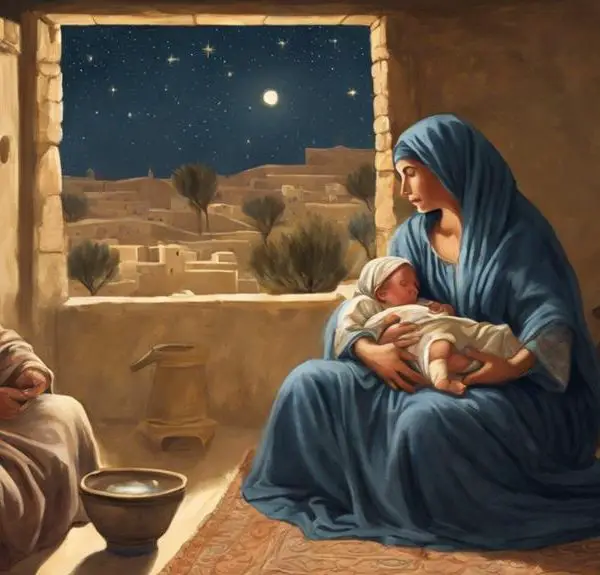

Sign up